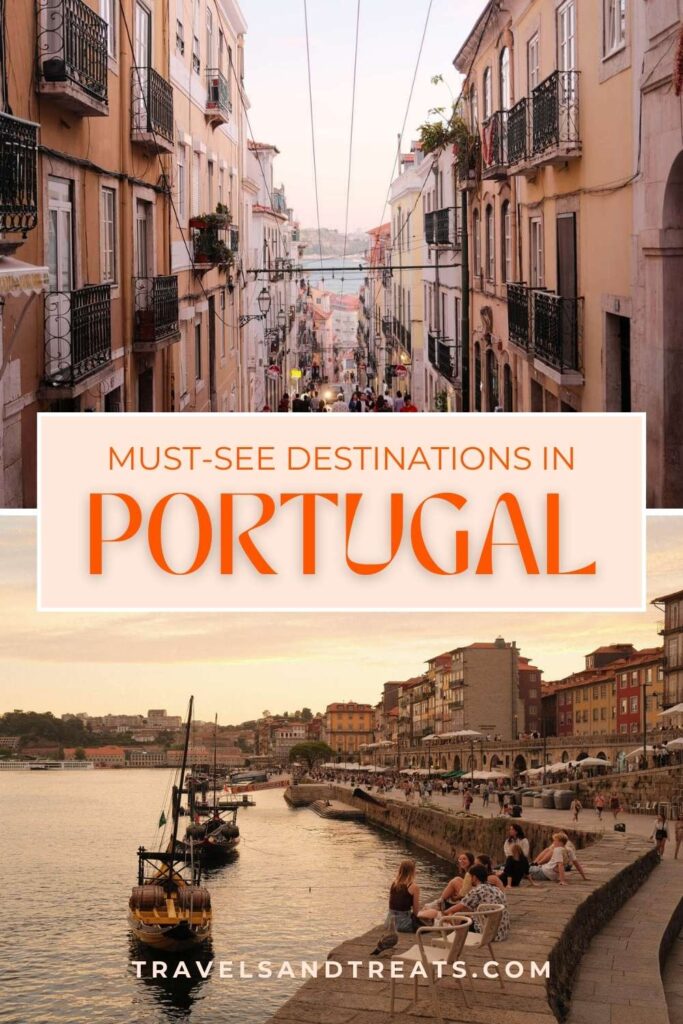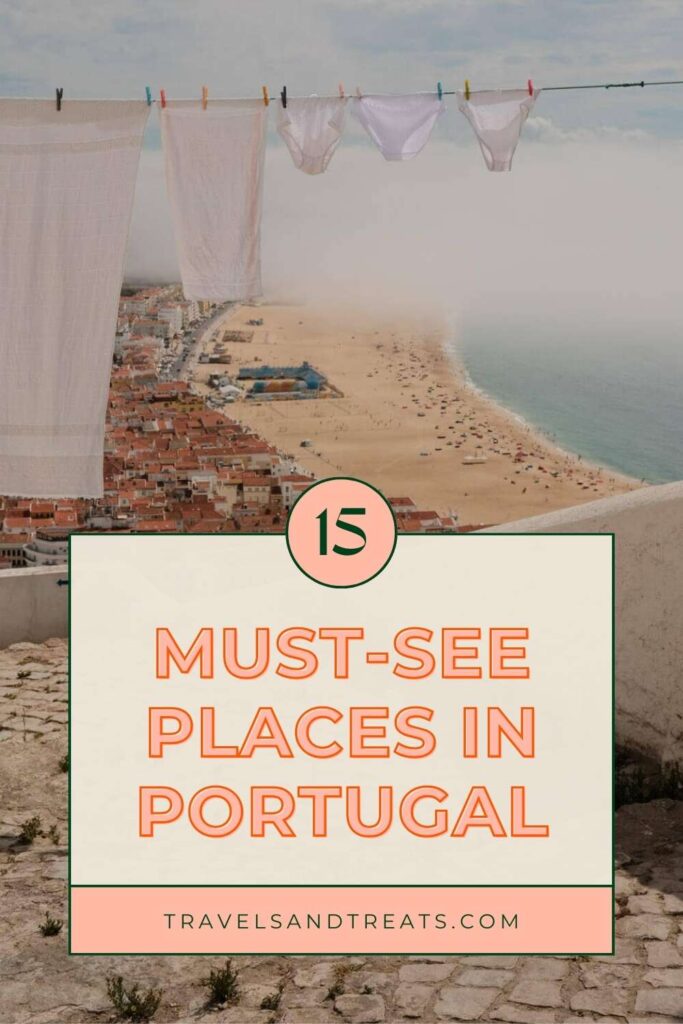Portugal is full of must-see places, from beautiful beaches to historic cities. We’re sharing the best places to visit in Portugal as a tourist, including the main tourist hot spots and lesser-known gems.
Welcome to the sun-kissed, wine-splashed, and utterly magnetic land of Portugal! Hold on to your sangria because this guide will show you why Portugal is worth visiting and well-deserving of a spot on your travel bucket list.
So, why Portugal, you ask? It’s a country that checks all the boxes and then some. Beach bums, history buffs, foodies, and nature enthusiasts rejoice! Portugal is your personal playground; it has more flavors than an ice cream parlor on a summer day.
So, grab your passport and sense of adventure because Portugal is about to steal your heart. We’ll show you where to go, where to stay, and how to dive deep into the best places in Portugal.
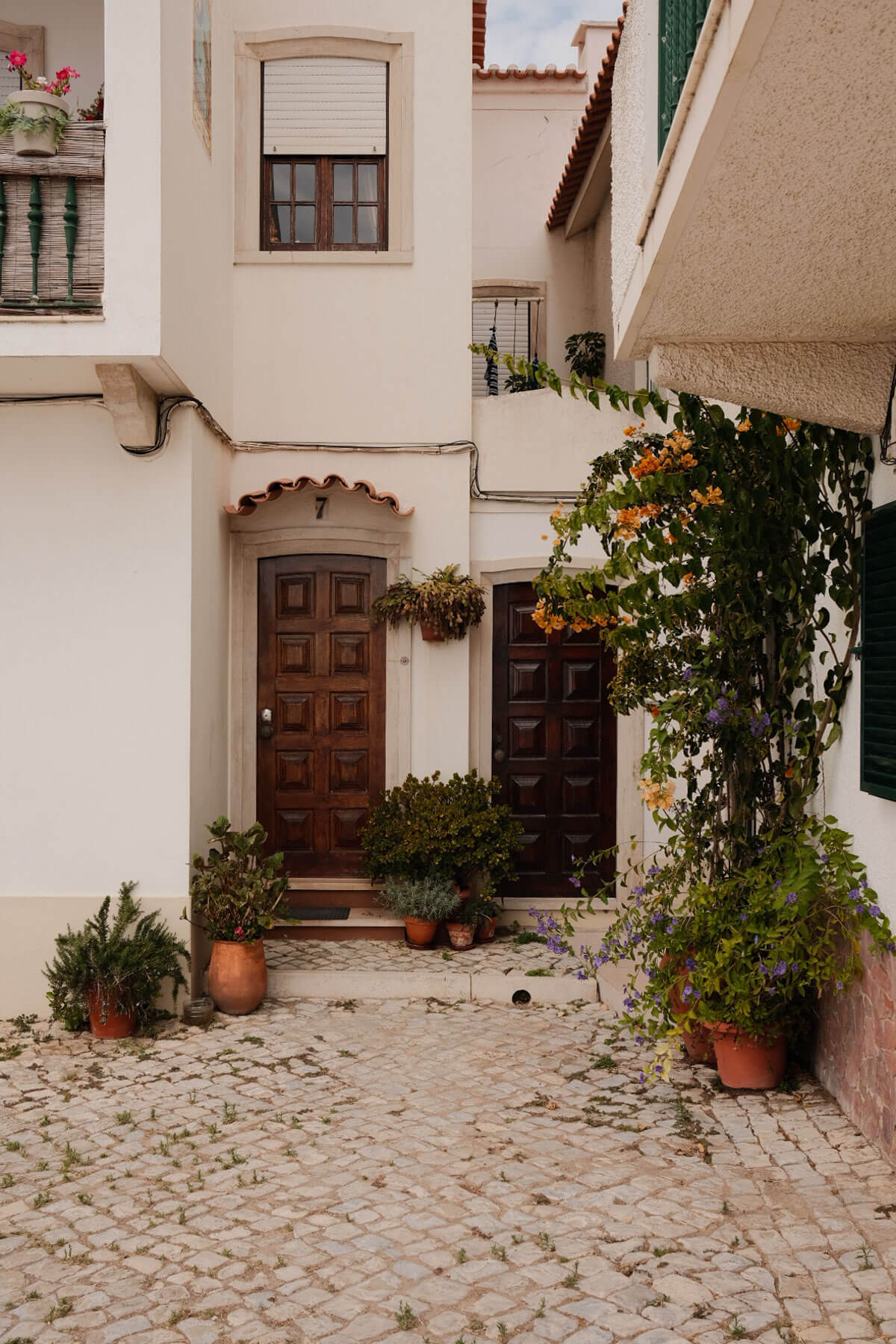
How to Get to Portugal
Portugal is easily accessible from around the globe, and it has become especially easy to access from the United States over the last few years. Whether you’re traveling by air, sea, or land, we’ve got the 411 on how to make your grand entrance.
By Air
Lisbon’s Humberto Delgado Airport and Porto’s Francisco Sá Carneiro Airport are your top gateways, along with Faro Airport if you want to visit Southern Portugal’s Algarve region. TAP is a Portuguese-based airline that now offers non-stop flights to Lisbon from a selection of major cities in the US. Our home airport in San Francisco has multiple weekly Lisbon departures, with connections to Porto and Faro.
If you’re already in Europe, traveling to Portugal is a piece of cake. A variety of budget airlines offer affordable, fast flights. When we’ve been unable to find the right flight from the US directly to Portugal, we will fly to another major airport, like London Gatwick, and catch an EasyJet flight from there to Faro, Lisbon, or Porto.
By Land
For adventurers from neighboring Spain or other parts of Europe, hopping in the car or taking a scenic bus ride is all part of the journey. The well-connected road and highway networks in Portugal make road trips a breeze.
TIP: The best part about renting a car and driving yourself around is that you can tackle several of these must-see places in Portugal. With Porto, Lisbon, and the Algarve region being the top tourist destinations, you can find many other places on this list that are conveniently located somewhere in between. Portugal is one of our favorite road trip destinations!
How to Get Around Portugal
Now that you’re in Portugal, how will you get around to all of the best places? The good news is that Portugal offers a variety of efficient ways to get around, whether you’re exploring cities and towns or taking in the beautiful countryside. So, let’s spill the tea on how to travel around Portugal.
By Foot
The best way to truly immerse yourself in the soul of Portugal is by taking it one step at a time – quite literally. Many Portuguese cities, especially Lisbon and Porto, are designed for pedestrians. Wander through historic neighborhoods, discover hidden alleys, and let the vibrant street life captivate you.
Walking is also a great way to explore local markets, savor street food, and snap those Instagram-worthy shots. We love learning from and spending time with locals whenever possible, so we highly recommend checking out the wide variety of Portugal walking tours.
By Tram
Lisbon is famous for its iconic yellow trams that rattle through the city’s historic neighborhoods, including the famous Tram 28 route. They’re a charming throwback and a convenient way to explore the city’s many hills and winding streets. Hop on, hold onto your hat, and enjoy a scenic ride through Lisbon’s most picturesque quarters.
By Metro
Lisbon and Porto boast efficient metro systems that make traveling within the city a breeze. They’re clean, safe, and well-connected to major attractions and neighborhoods.
A metro pass might be your ticket to hop-on-hop-off exploration if you plan to stay within city limits. Cities often offer passes for tourists to use public transit. Check out the Lisbon city pass and Porto transit card.
By Bus
Portugal’s bus network is extensive and affordable, making it an excellent option for connecting cities, towns, and more remote destinations. Companies like Rede Expressos and FlixBus offer comfortable, air-conditioned coaches for longer journeys. It’s a great choice if you’re planning to explore different regions. Check your Portugal bus options here.
By Train
Portugal’s rail network is a fantastic way to travel between cities and regions. The trains are comfortable, efficient, and often showcase beautiful scenic routes. The combination of reliability and charm makes train travel a popular choice for local and international journeys. Get more information on Portugal train options here.
By Car
If you’re all about flexibility and adventure, renting a car is a fun way to travel around Portugal. It allows you to explore remote regions, hidden gems, and picturesque coastal routes easily. We recommend renting a car to travel between cities or visit remote locations. Having your own vehicle lets you easily see more of the best places in Portugal. We use this website to book our rental car in Portugal.
We do not recommend keeping a rental car while staying in Lisbon or Porto. Each city has its public transport, or you can explore on foot. The narrow, hilly streets are a challenge to drive, and there typically isn’t parking readily available.
By Ferry
If you plan to venture to the Azores or Madeira, the local islands offer an efficient network of ferries and local flights for island hopping. It’s a must to explore the breathtaking landscapes and outdoor activities these destinations offer.
You can find ferry services in other coastal areas of mainland Portugal, like the Algarve region, which serves local islands.

The Best Time to Visit Portugal
Spring & Early Summer: Blossoms and Beaches (April to June)
Spring in Portugal is a true spectacle. The temperatures start to rise, flowers bloom in profusion, and the beaches begin to beckon. It’s a fabulous time to explore Portugal’s historic cities without the scorching summer sun. The coastal areas are coming to life in May and June, and it’s starting to feel like beach season.
Summer: Sizzle and Sunshine (July to August)
Summer in Portugal is simply sizzling, and we’re not just talking about the weather! The beaches come alive, festivals and events are in full swing, and the streets are bustling. But be prepared to share the fun with fellow travelers. July and August are the busiest tourist months in Portugal.
While busy, summer in Portugal is ideal for travel if you want an authentic beach experience. We’re not a fan of crowds, but it’s hard to beat a jump in the turquoise Algarve waters on a hot summer day.
Early Autumn: Wine, Food, and Harvest (September to October)
Early autumn is your sweet spot if you enjoy milder temperatures, fewer crowds, and wine harvest season. The Douro Valley’s vineyards are bustling, the weather is just suitable for exploring, and the charm of Sintra or Porto is even more romantic. Plus, you can enjoy the local festivals without the summer hustle and bustle.
Late Autumn & Winter: Cozy Up and Get Cultured (November to March)
Wintertime in Portugal has a different kind of charm. The cooler weather makes it perfect for strolling through historical sites, visiting museums, and trying all the cozy comfort food. Plus, you’ll have the place to yourself!
Christmas and New Year’s are particularly magical in Portugal, with Lisbon and Porto dazzling with holiday lights and festivities. But remember to bring an umbrella – the heavens might decide to join the party.
Each season has its unique charm, so whether you’re a sun worshipper, a foodie, or a culture vulture, there are places worth visiting in Portugal all year round. When in doubt, just remember Portugal is always in season. After all, Portugal has the most days of annual sunshine in Europe.
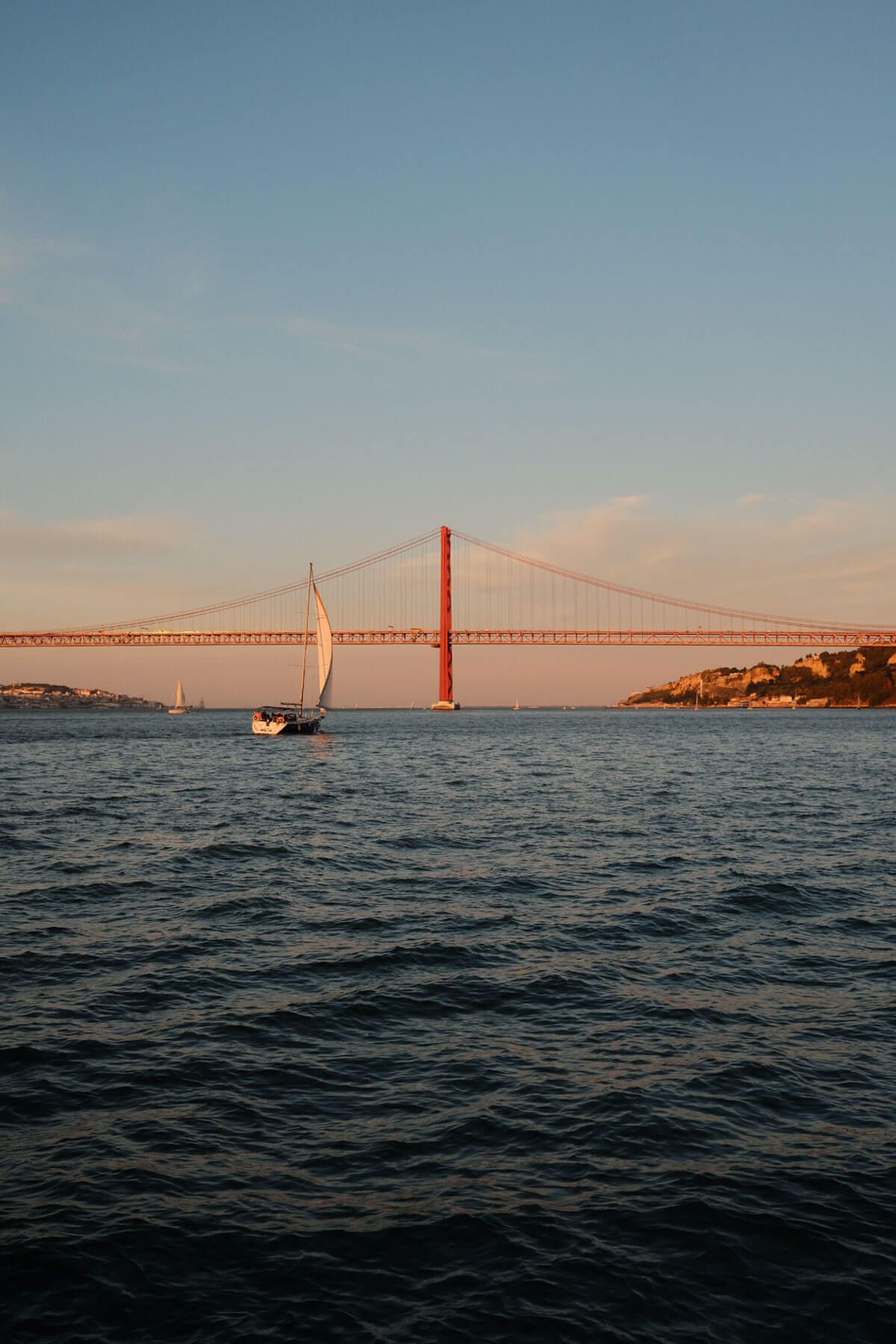
How many days is ideal in Portugal?
How many days should you spend in Portugal? Well, that’s like asking how many toppings you should have on your ice cream – it’s a matter of personal taste! But we’ve got some insider scoop to help you decide how long to stay in Portugal to hit the best spots.
A Weekend Escape (2-3 Days)
If you’re on a tight schedule, don’t worry; you can still taste Portugal’s fabulousness on a long weekend. Focus on one city, like Lisbon or Porto, and dive deep into its culture, history, and cuisine. Two to three days give you enough time to explore the highlights, soak up the vibes, and get a feel for the local scene.
A Quick Week (5-7 Days)
A week in Portugal lets you spread your wings a little wider. You can explore one or two cities and add a day trip or two to your itinerary. If you have six days in Portugal, our recommendation is to split your time between either Lisbon and Porto or Lisbon and the Algarve.
The Classic 10-Day Trip (7-10 Days)
Here’s where things get exciting! With 7 to 10 days, you can start checking off more of the best places in Portugal. Visit Lisbon, Porto, and sprinkle in a day trip to Sintra, a coastal escape to Cascais, or a wine-tasting day trip to Douro Valley. You’ll get a well-rounded taste of some of Portugal’s most incredible places.
The Extended Affair (2 Weeks or More)
Now we’re talking! With two weeks or more, you can deeply immerse yourself in Portugal’s culture and discover its hidden gems. Explore the cities, venture into the countryside, and lose yourself in the natural beauty of the Azores or Madeira. You’ll have plenty of time for road trips, winery visits, and leisurely exploration.
Ultimately, the duration of your stay depends on your travel preferences, interests, and how many pastéis de nata you can devour. Regardless of your timeline, each day you spend here is bound to be fabulous.
the Best Places to Visit in Portugal as a Tourist
Let’s get to it and start planning your Portugal itinerary! Here are some of the best destinations to visit in Portugal as a tourist:
- Lisbon
Lisbon, the buzzing Portuguese capital, is a dynamic blend of tradition and modern cool. The city experienced a massive increase in tourism in the last decade. When you visit, you’ll understand why Lisbon is such a popular travel destination.
With its picturesque hills, sun-soaked squares, and iconic yellow trams, Lisbon’s got Instagram-worthy moments at every turn. The city’s legendary nightlife will have you dancing from dusk till dawn, but it’s not just about partying. The pastel de nata pastries, savory seafood, and world-class wines are like a culinary carnival for your taste buds.
Start your Lisbon adventure in Alfama, the city’s historic heart, where winding streets lead to stunning viewpoints. Explore the vibrant Bairro Alto for trendy bars and artistic vibes. Don’t miss the gorgeous Jerónimos Monastery or the modern and trendy LX Factory.
And if you’re up for it, a ride on Tram 28 will show you the city’s soul as it rumbles through charming neighborhoods. Lisbon’s got that irresistible blend of culture, cuisine, and charisma that’ll make you fall head over heels. From the colorful streets of Mouraria to the historic charm of Belém, Lisbon is a world-class destination that will forever be one of the must-visit places in Portugal.
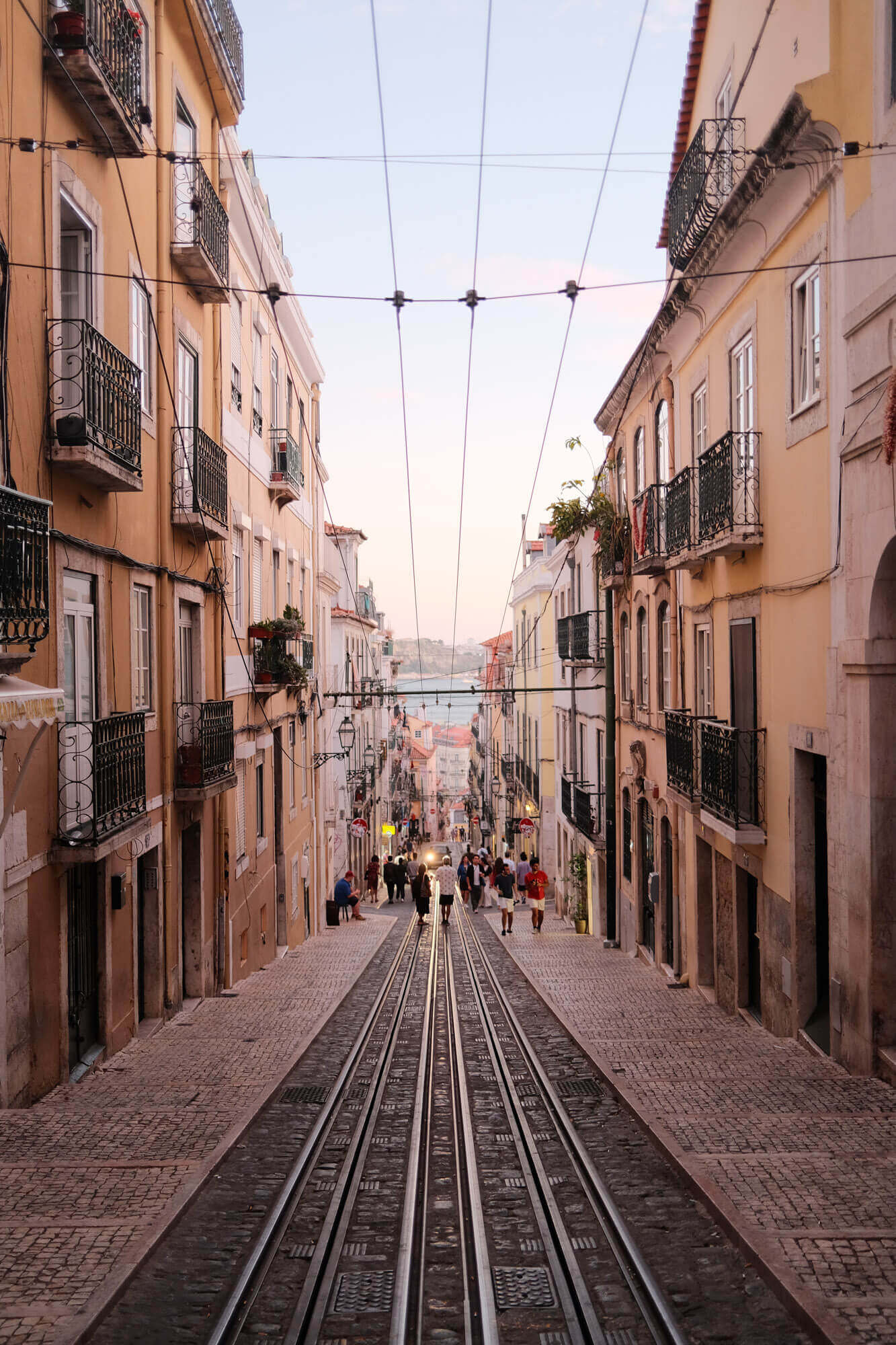
- Porto
Porto, baby, where do we even start? This Portuguese city is all about vintage vibes, riverside rambles, and some of the best wine on the planet. Here’s the lowdown on why Porto is a travel dream and one of the most popular destinations in Portugal.
You can’t talk about Porto without shouting out the wine scene. The city is the birthplace of port wine, and you’d be crazy not to hit the port cellars in Vila Nova de Gaia. Sip your way through tastings and soak in that wine wisdom.
Ribeira is like Porto’s heart, and it’s where the magic happens. This UNESCO World Heritage site is a maze of colorful houses, narrow streets, and gorgeous views of the Douro River. Crossing the iconic Dom Luís I Bridge is a must, and the sunset here is straight-up breathtaking. I highly recommend heading out there with your camera during golden hour.
The food in Porto will keep foodies entertained; there isn’t enough time to try all of Porto’s best eats. Francesinha, a monster sandwich smothered in sauce and cheese, is a typical must-try Porto dish. Hit up the Mercado do Bolhão for some market madness and pick up local treats as souvenirs. Like most cities, we recommend taking a food tour in Porto for a well-rounded experience.
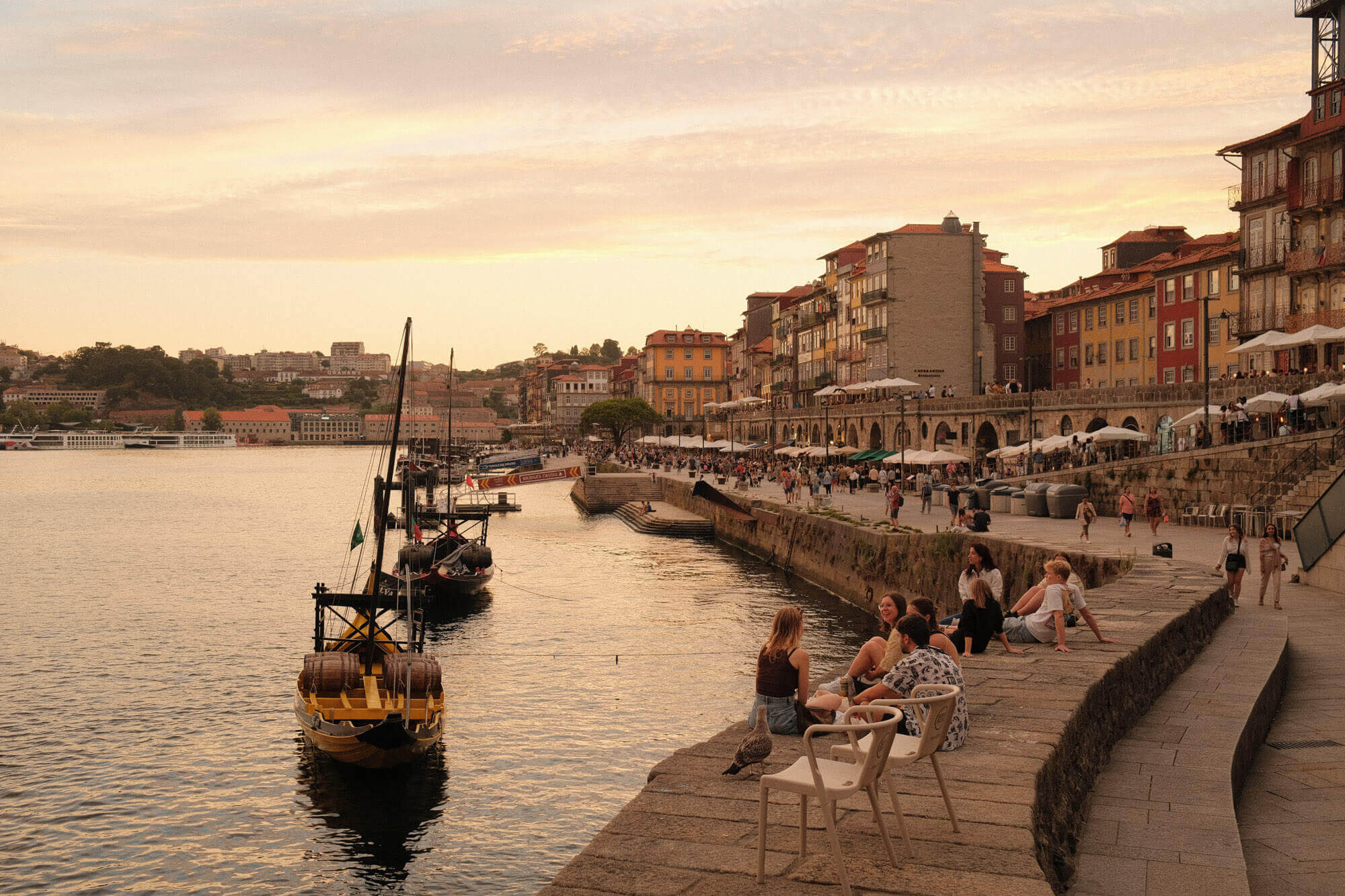
- Sintra
Sintra, the fairy tale town of Portugal! You know you’re in for a whimsical adventure when the whole place looks like it was plucked from a storybook. Here’s what makes Sintra the ultimate daydream destination.
Sintra is all about the palaces. The Palácio da Pena is like a kaleidoscope exploded all over a castle. Seriously, it’s a riot of colors, turrets, and terraces. And then there’s the Palácio Nacional de Sintra, the town’s true crown jewel with its twin chimneys and royal history.
Beyond the palaces, you’ll find lush forests and hidden gardens that make you feel like you’re in a fantasy novel. The Quinta da Regaleira is a wonderland of caves, tunnels, and mystical symbols. For some of the best views ever, hike up to the Moorish Castle. The vistas are out of this world.
Sintra is also the birthplace of the Travesseiro – a flaky pastry stuffed with almond cream. You’ve got to try one, or five. Stop by Piriquita or Casa do Preto for some of the best pastries in town.
Sintra’s a small town; you can cover the highlights in a day or two. It’s the perfect day trip from Lisbon if that is your home base. The best way to get around is on foot, but the 434 bus will take you to the main attractions if you want to avoid walking. It’s a hilly place, so comfy shoes are a must.
This town is like stepping into a dream. It’s got castles, forests, and pastries – what more could you want? The air is crisp, and the sights are surreal. Sintra is that enchanting escape you’ve always dreamed of. So dreamy that I got married there!
- The Algarve
The Algarve is a popular tourist destination in southern Portugal known for its stunning coastline, beautiful beaches, and Mediterranean climate. It is one of Portugal’s most popular places to visit, attracting visitors with its warm weather and stunning beaches.
This must-see region of Portugal is unique to this list because we are sharing it as an entire region rather than one specific town or city. The coastline is peppered with different Algarvian towns, so where you stay is a matter of personal preference and the atmosphere you seek while traveling.
Explore charming towns like Lagos, Tavira, and Albufeira, each with its own unique history and cultural attractions. Our favorite place that we have stayed in the Algarve is a small town called Olhao. We’ve also stayed in Lagos before, which has a fun backpacker-type vibe to it.
The Algarve is famous for its beautiful beaches. Spend your days soaking up the sun, swimming in the clear waters, or trying water sports like surfing, kayaking, and stand-up paddleboarding. Some top beaches to visit include Praia da Marinha, Praia Dona Ana, and Praia da Rocha.
Take a boat tour to explore the stunning sea caves along the Algarve coast. The Benagil Sea Cave, with its famous “Algar de Benagil,” is a must-visit attraction in Portugal.
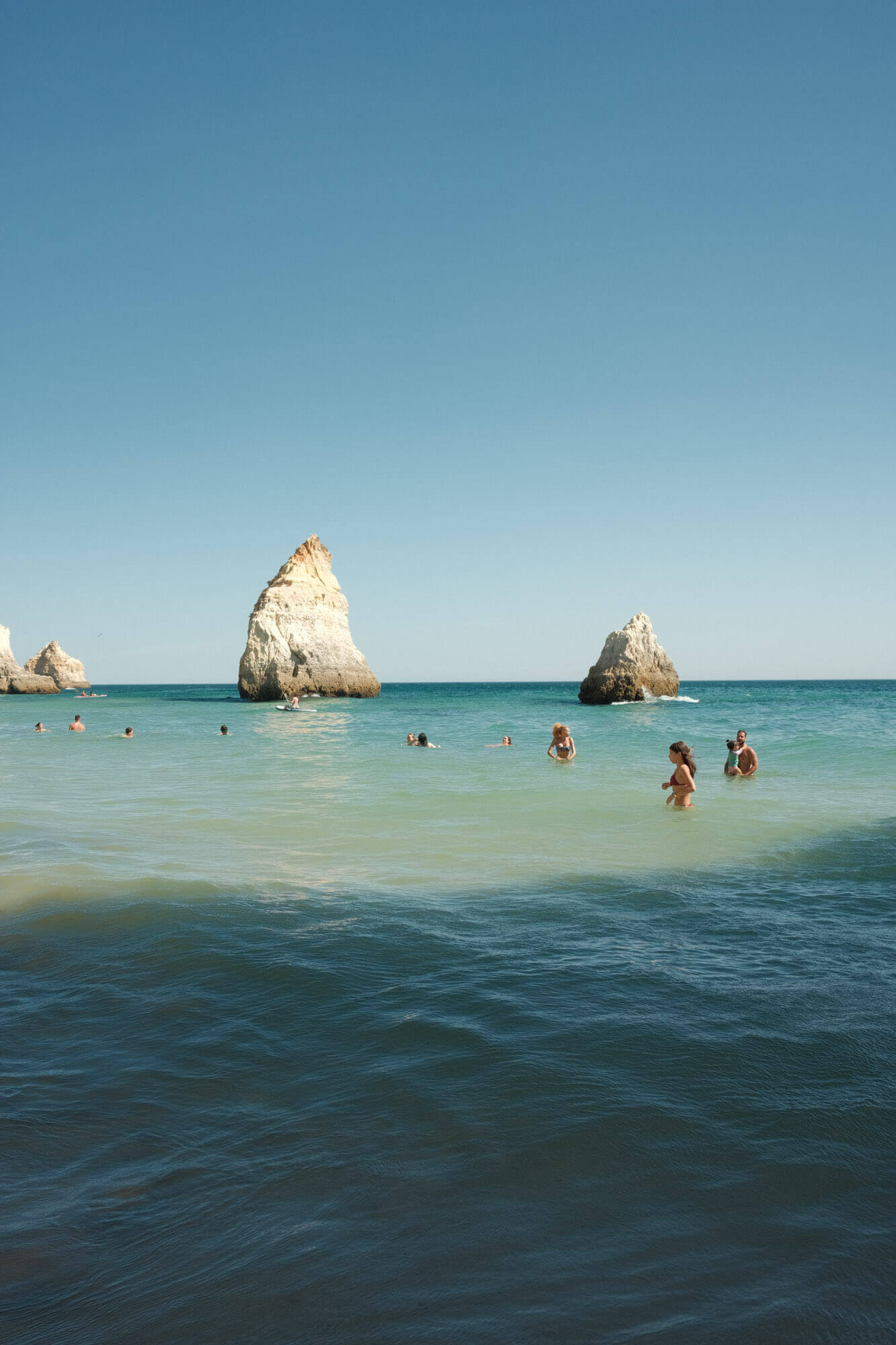
- Coimbra
Coimbra is where history, culture, and lively students unite perfectly. This charming town is a hidden treasure, and here’s the scoop on why you should drop everything and head there.
Coimbra is home to one of the world’s oldest universities, and you can’t visit without checking out the University of Coimbra. The Joanina Library is a jaw-dropping beauty with its gilded details, and the university’s bell tower offers some unbeatable city views. The Royal Palace, or Paço das Escolas, is also a beauty with its grand architecture.
Fado, Portugal’s soulful music, is part of Coimbra’s DNA. Head to a local Fado house for some heart-tugging serenades. You won’t understand a word, but you’ll feel every note.
Coimbra sits by the Mondego River; a stroll along its riverside is a must. You’ll find charming parks, gardens, and even a cute little river beach.The Botanical Garden is a lush oasis for a relaxing stroll, and you can get the best views from Santa Clara-a-Velha Monastery.
Coimbra is a city located in central Portugal. It is the capital of the Coimbra District and is in the region known as Beira Litoral. Coimbra is approximately 200 kilometers (124 miles) north of Lisbon, Portugal’s capital, and it’s about 125 kilometers (78 miles) south of Porto.
Coimbra is perfect for a day trip from Lisbon or Porto, but it’s even better if you stay overnight. The student-driven nightlife is lively, so be prepared for some fun evenings. Coimbra is known for its roasted suckling pig, so try it at one of the local restaurants.
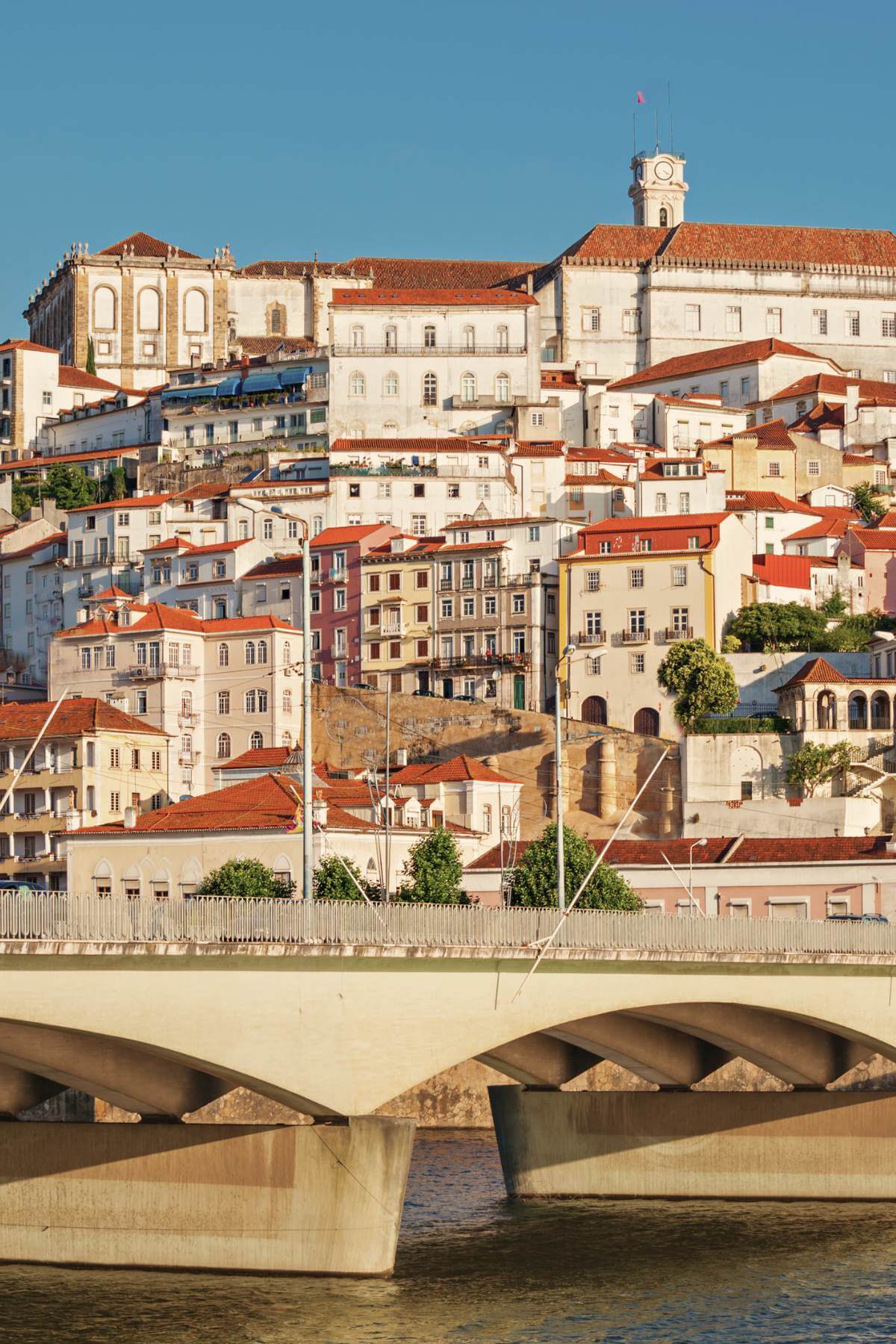
- Évora
Evora is an adorable little city in Portugal’s Alentejo region. Evora’s historic center is a UNESCO World Heritage site; you’ll quickly see why. The city is like an open-air museum, with well-preserved Roman ruins, a stunning cathedral, and a charming square, Praça do Giraldo, where locals gather for coffee and people-watching. Stroll along the ancient city walls and take in panoramic views of Evora. You’ll feel like you’re on top of the world.
One of the most unique attractions in Evora is the Capela dos Ossos, or Chapel of Bones. It’s a church adorned with, you guessed it, human bones. It might sound eerie, but it’s a mesmerizing place with an important message about the transience of life.
The Alentejo region is known for its wine and food, and Evora is the perfect place to sample both. You’ll find quaint taverns and restaurants serving hearty Alentejan dishes. Try some local dishes like migas (bread-based dish), açorda (garlicy soup), and, of course, the fantastic Alentejo wines.
Évora is located in the southern part of Portugal. It is the capital of the Évora District and is in the Alentejo region. Évora is approximately 130 kilometers (81 miles) east of Lisbon, the capital of Portugal, making it easily accessible from the country’s largest city.
Evora is small, and you can see the highlights in a day. Wear comfy shoes because you’ll want to wander the cobbled streets. Be sure to climb the Evora Cathedral’s tower for some unbeatable views.
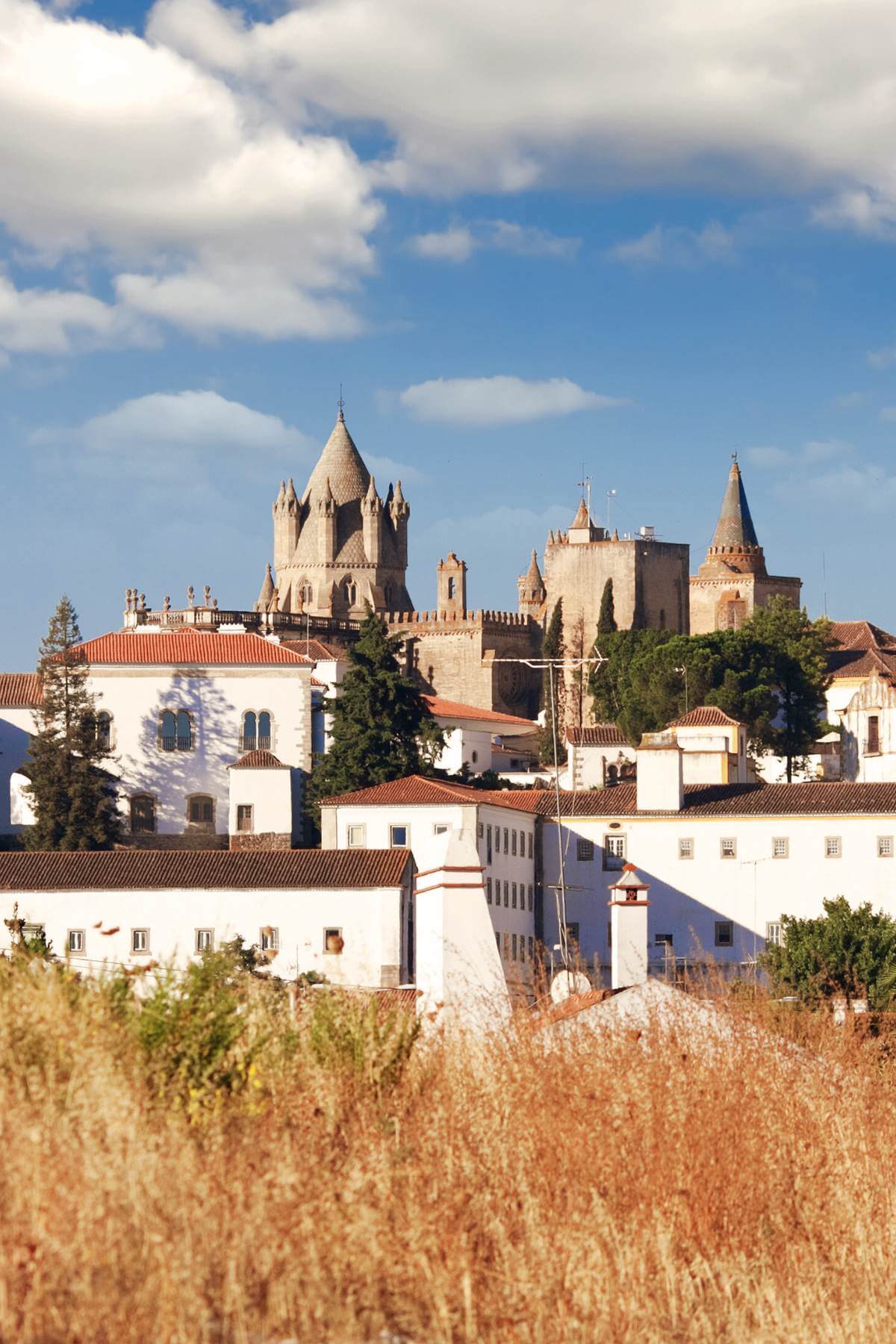
- Braga
Braga is often called the “Rome of Portugal” because of its religious significance. You can’t miss the Bom Jesus do Monte Sanctuary, a majestic church atop a hill, reached by a stunning baroque staircase or a water-powered funicular.
The historic center of Braga is a wonderland of narrow streets, squares, and churches. The Sé de Braga, the city’s cathedral, is a stunning piece of architecture. And don’t forget to check out the Roman ruins and the medieval Castle of Braga.
Braga is a city located in the northern part of Portugal. It is the capital of the Braga District and is situated in the historical and cultural region of Minho. Braga is approximately 55 kilometers (34 miles) northwest of Porto.
Braga is a perfect day trip from Porto, but staying overnight lets you experience the city’s vibrant nightlife. While the locals are friendly and welcoming, English is less widely spoken than in bigger cities, so a few Portuguese phrases go a long way.
Braga is compact, so exploring on foot is the way to go. Remember that many businesses close for a siesta break in the afternoon, so plan your adventures accordingly.
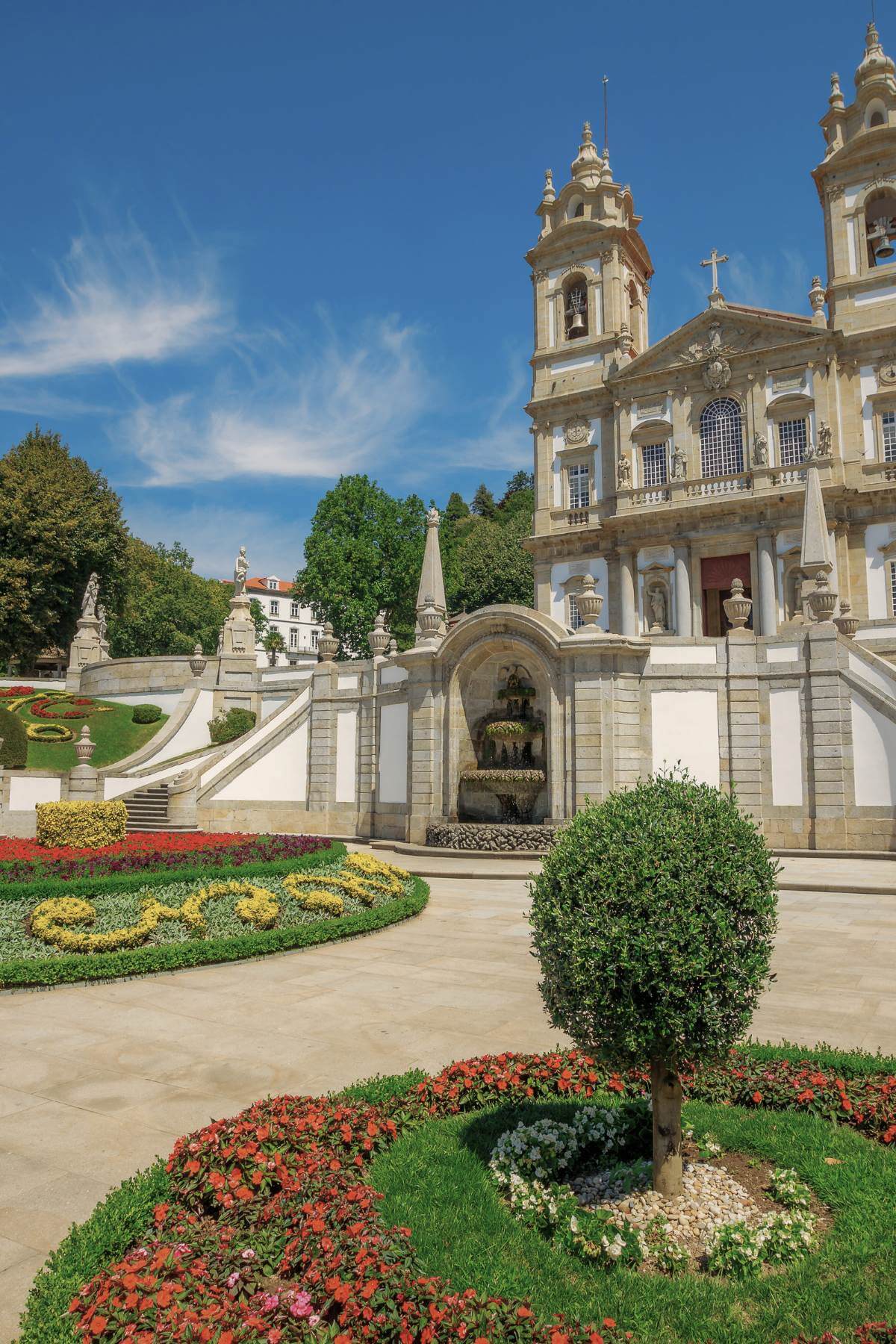
- Guimarães
Guimarães is often referred to as the “Birthplace of Portugal,” so of course it should be included on the list of places to visit in Portugal.
The Guimarães Castle, perched on a hill, is jaw-dropping with its towering stone walls. It’s where the first King of Portugal, Afonso I, was born. Climb the castle walls for stunning views over the city. The Palace of the Dukes of Braganza is another gem – a grand mansion with lush gardens and incredible history.
Guimarães’ historic center is a UNESCO World Heritage site. The medieval architecture, cobbled streets, and beautifully preserved buildings transport you back in time. The iconic Largo da Oliveira square is a must-visit, with its medieval vibe and lively cafes.
The Paço dos Duques de Bragança is a beautiful palace that feels like it’s right out of a fairy tale. Its stunning gardens, impressive architecture, and historical significance make it a Portugal must-see.
Guimarães is located in the northern region of Portugal. It is situated in the Braga district, part of the Minho region. Guimarães is approximately 55 kilometers (34 miles) northwest of Portugal’s second-largest city, Porto, and it’s easily accessible by road or by train from Porto. Guimarães is perfect for a day trip from Porto, but an overnight stay is even better for soaking in the atmosphere.
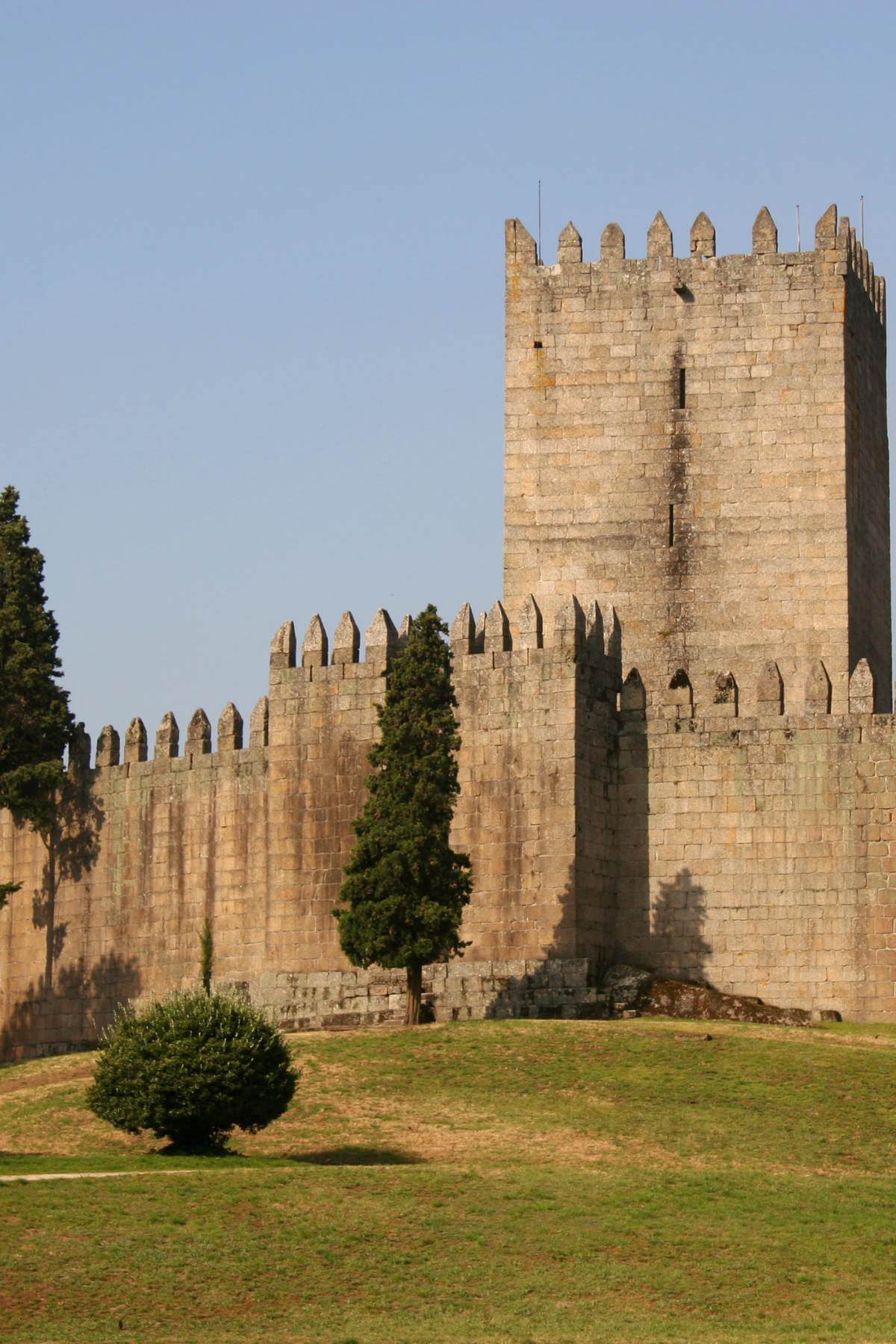
- Aveiro
Aveiro, often called the “Venice of Portugal,” is a coastal town that’s all about colorful canals, charming boats, and delectable seafood. The canal scene is unique and makes this one of the top places to visit in Portugal.
Aveiro’s canals are a piece of art, and you can’t miss the ‘Moliceiros,’ the colorful boats that glide along the waterways. Hop on one for a canal cruise.
The city is famous for ‘ovos moles,’ sweet pastries made with egg yolks. You can’t leave without trying them. Walk around the city and pop into local pastry shops – you’ll find them in all their sugary glory.
Foodies will want to explore the ‘Mercado do Peixe,’ a bustling fish market where you can savor the freshest seafood. Stroll along the ‘Praça do Peixe’ square, lined with seafood restaurants where you can savor the day’s catch.
Aveiro is located in the central coastal region of Portugal. It is situated approximately 73 kilometers (45 miles) south of Porto, one of Portugal’s major cities, and about 250 kilometers (155 miles) north of Lisbon, the capital of Portugal.
Aveiro is a fantastic day trip from Porto, only about an hour away by train. If you happen to travel from Lisbon to Porto, Aveiro is a great pitstop along your journey between the two cities. It’s easy to explore on foot or by bike.
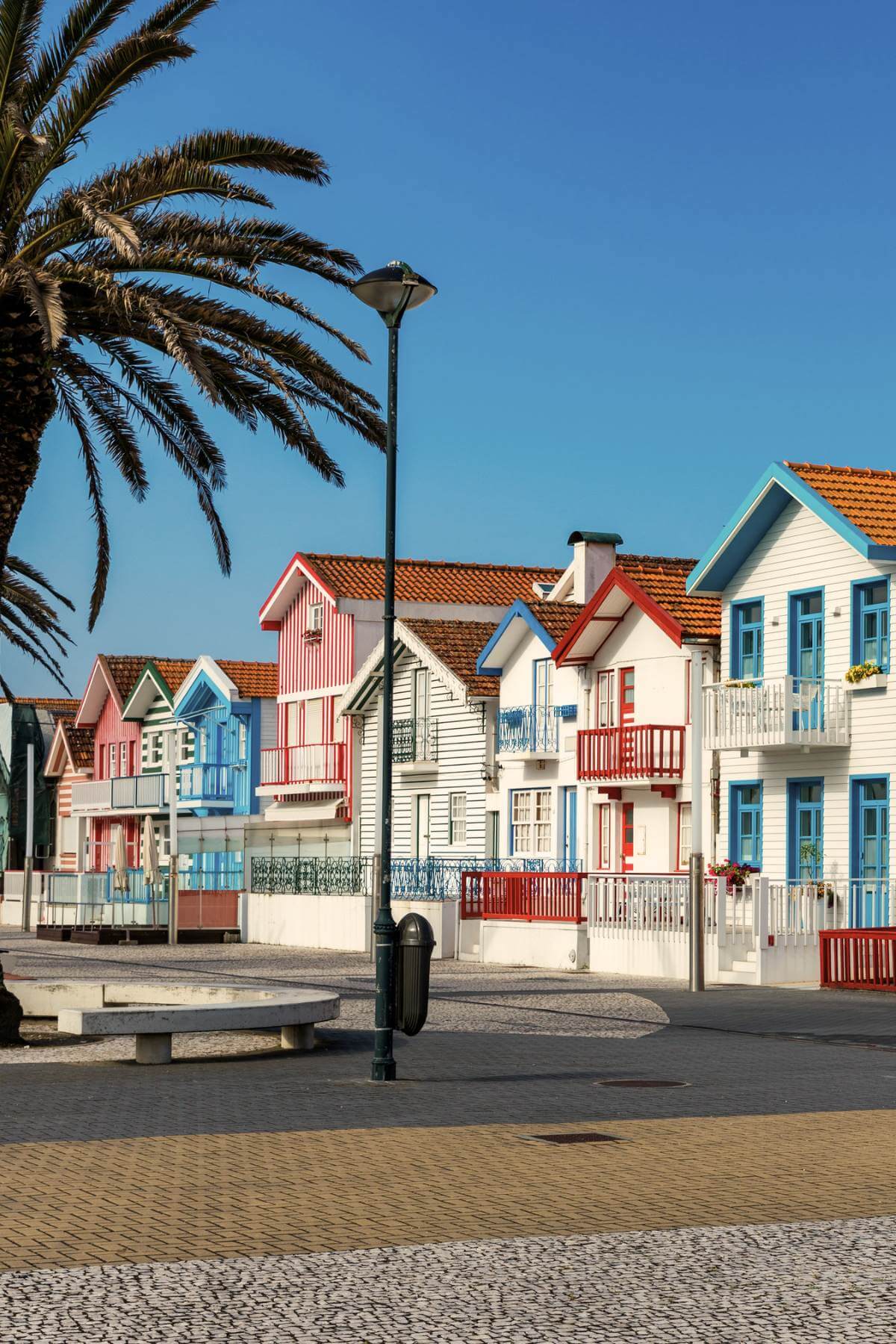
- Madeira
Madeira, the “Pearl of the Atlantic,” is a slice of paradise just off the coast of Portugal. It is the ultimate escape for those seeking natural beauty, adventure, and a laid-back island vibe.
Madeira is an autonomous region of Portugal located in the Atlantic Ocean. It is situated about 1,000 kilometers (621 miles) southwest of Lisbon, the capital of Portugal, and approximately 700 kilometers (435 miles) west of the coast of Morocco.
Madeira is a lush, volcanic island with jaw-dropping landscapes. From the dramatic cliffs of Cabo Girão to the otherworldly beauty of the Laurissilva Forest, it’s a nature wonderland.
Don’t miss the Levada walks – a network of irrigation channels that wind through the island’s interior. They offer some of the best hiking trails in the world, with breathtaking views around every corner.
If you want to see the island’s highlights, renting a car is a great idea. Madeira’s roads offer incredible coastal drives and mountain adventures. The island’s capital, Funchal, is a great base to explore from.
In Funchal, the Mercado dos Lavradores is a sensory delight with exotic fruits, flowers, and local crafts. Be sure to try Poncha, a traditional Madeiran drink made with aguardente, honey, and lemon juice. If you’re a fan of botanical gardens, the Jardim Botânico in Funchal is a must-visit.
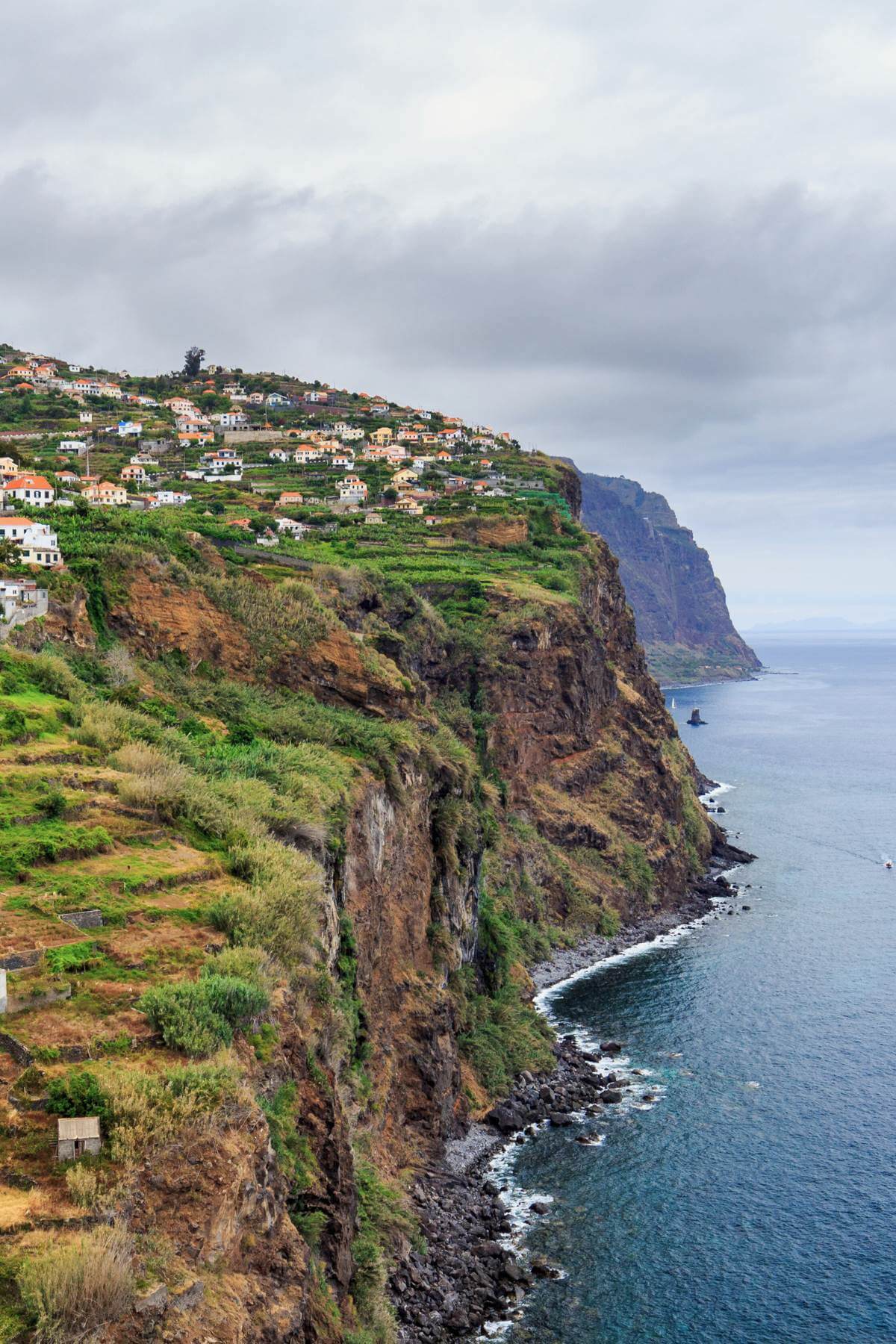
- The Azores
The Azores is an autonomous region of Portugal located in the middle of the Atlantic Ocean. It is an archipelago with nine volcanic islands, known for its stunning natural beauty, diverse landscapes, and outdoor recreational opportunities. Lush forests, dramatic coastlines, volcanic craters, hot springs, and vibrant marine life characterize the islands.
The nine Azores’ islands are São Miguel, Terceira, Pico, Faial, São Jorge, Santa Maria, Graciosa, Flores, and Corvo. Each island has its own distinct charm and natural wonders, making the Azores a diverse and captivating destination for travelers.
São Miguel and Terceira are the two islands that are the most easily accessible. These two islands have flights from the US and other major airports in Europe. São Miguel is the island most often visited by tourists, but for good reason. From the emerald lakes of Sete Cidades to the fiery furnace of Furnas, it’s like hiking through a different world.
Don’t forget to try the cozido das Furnas, a traditional meal cooked in volcanic steam. And keep your eyes open for local festivals and celebrations – they’re the heart and soul of the islands.
Undoubtedly, the Azores is one of the most beautiful places in Portugal. There is nowhere else quite like it. It’s a must-visit place in Portugal and honestly deserves a trip of its own.

- Nazaré
Nazaré is famous for its colossal waves, some of the biggest on the planet. The North Canyon draws big-wave surfers from all over the world. Even if you’re not riding the giants, watching these pros in action is a thrilling experience.
The town’s beach, Praia da Nazaré, is a golden stretch of sand where you can soak up the sun and enjoy the Atlantic breeze. It’s a fantastic spot for swimming, sunbathing, and just relaxing.
The seafood here is a must-try, especially the grilled sardines. And for thrill-seekers, there’s the funicular ride to get you from the beach to the Sitio.
Don’t miss the Sitio, the upper part of Nazaré. It’s a charming village with cobblestone streets and overlooks the town and beach. The viewpoint, Miradouro do Suberco, offers breathtaking panoramic views.
Nazaré is a must-see coastal town located in central Portugal. It is situated along the Atlantic Ocean, approximately 125 kilometers (78 miles) north of Lisbon. It’s a short drive from Lisbon, making it a popular day trip.
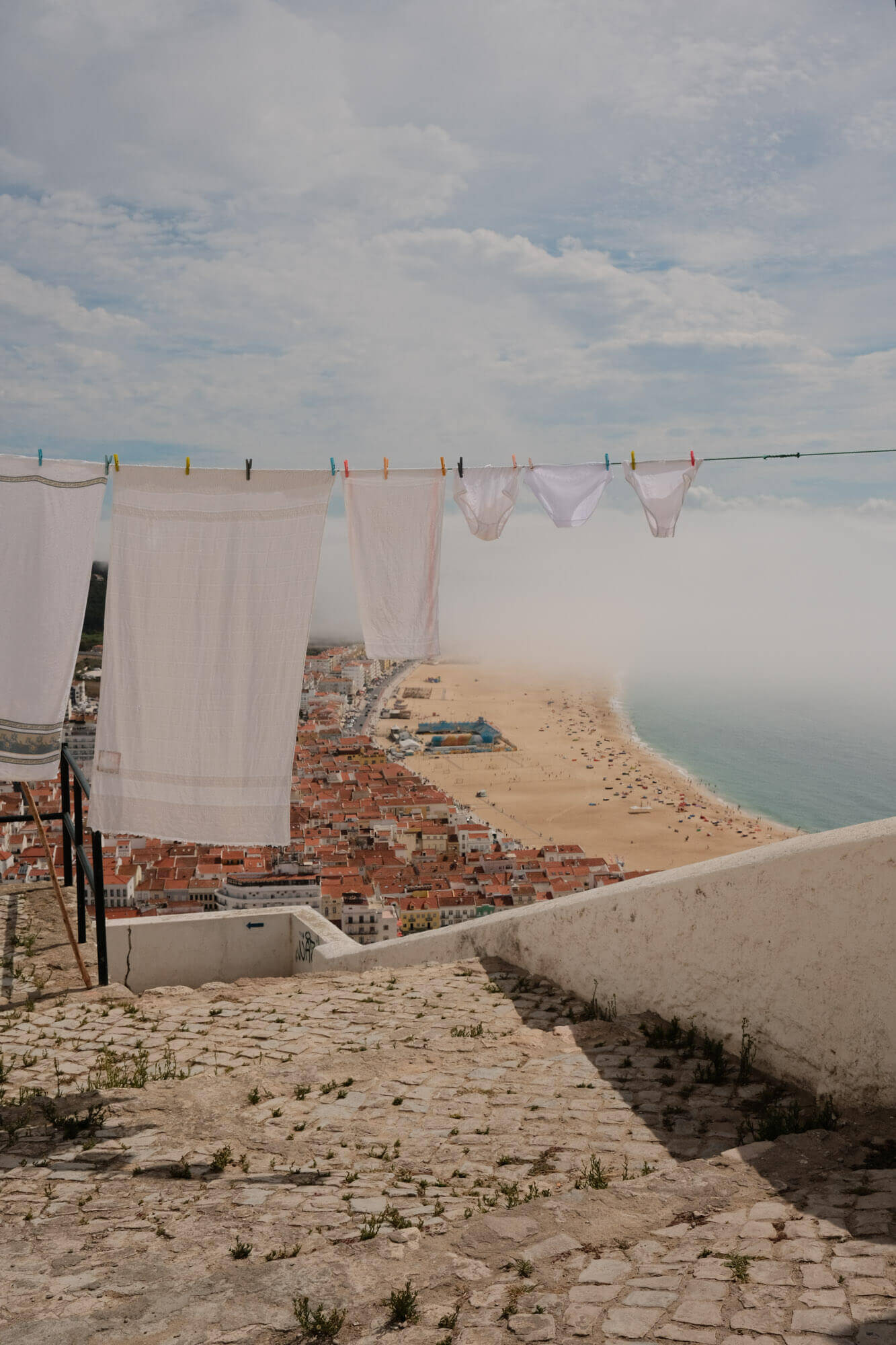
- Cascais
Cascais, a coastal gem just a short drive from Lisbon, is a picturesque seaside town embodying the epitome of Portuguese Riviera chic. Its stunning beaches, charming marina, and historic center exude an elegant and relaxed atmosphere.
Cascais boasts a rich maritime heritage, and you can explore this history at the Museum of the Sea or through the town’s lighthouses and fortresses. The town’s inviting promenade, lined with palm trees, invites leisurely strolls while the enticing scent of seafood wafts from the numerous seaside restaurants.
Start your journey with a trip to the beautiful Praia do Guincho. It’s a dreamy stretch of sand where you can surf, swim, or soak up the sun. Praia da Conceição is another gem, right in the heart of town.
The town’s historic center is a maze of cobbled streets, colorful buildings, and cozy cafes. Take a stroll along Rua Direita, visit the citadel, and don’t miss the Cascais Marina. If you’re a seafood lover, be sure to try the fresh catch of the day at one of the seaside restaurants.
A quick walk along the coast will take you to Boca do Inferno, a dramatic sea arch with waves crashing against the cliffs. It’s a fantastic spot for photos and taking in the power of the ocean.
Cascais is located in the Lisbon District of Portugal. It is situated along the Atlantic Ocean, approximately 30 kilometers (18 miles) west of Lisbon. It is a quick train ride from Lisbon, so it’s easy to visit for a day or as part of a more extended stay.
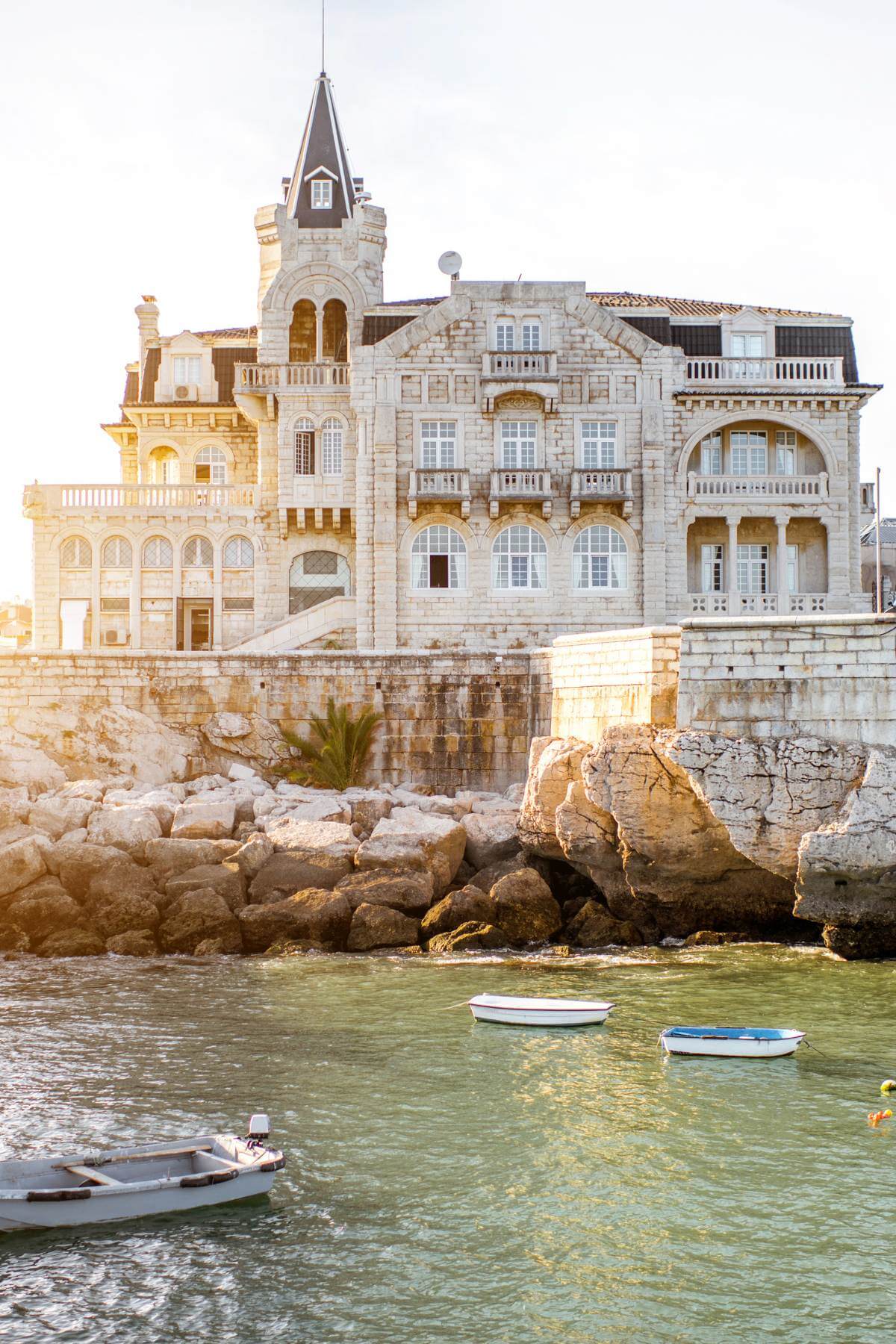
- Óbidos
Óbidos is a historic town located in central Portugal. It is situated in the Leiria District, approximately 85 kilometers (53 miles) north of Lisbon. The town is like a time capsule with its well-preserved medieval walls and cobblestone streets. Obidos is surrounded by ancient walls that you can walk along, a must-do activity.
Don’t forget to stop at the Porta da Vila, the main gate. Visit the Óbidos Castle, a medieval fortress that’s been beautifully preserved. It’s a great spot for panoramic views and exploring its historic nooks and crannies.
Don’t leave without trying a sip of Ginja liqueur, a sweet cherry brandy often served in chocolate cups. It’s a local specialty that will delight your taste buds.
Óbidos is a popular day trip from Lisbon and a perfect place to spend a romantic weekend. If you visit in July, don’t miss the Medieval Market, where the town transforms into a lively medieval fair.
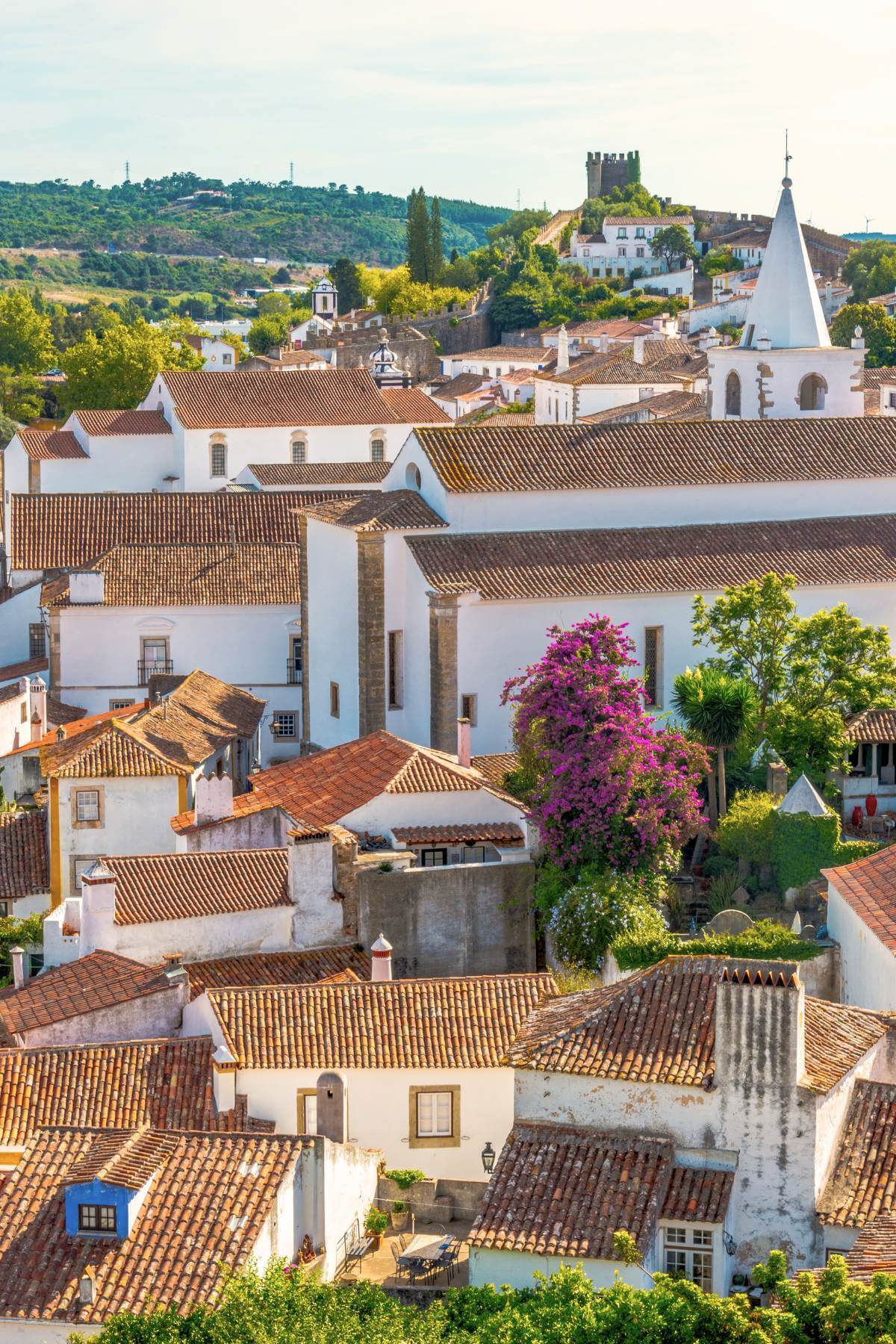
- Setubal
Setúbal is a coastal town located in southern Portugal. It is situated in the Setúbal District, which is part of the Lisbon District Region. Setúbal is located on the western side of the Setúbal Peninsula, along the banks of the Sado River and the Atlantic Ocean. It is approximately 48 kilometers (30 miles) south of Lisbon.
Setúbal is famous for its resident dolphin population. Take a boat tour to see these playful creatures in their natural habitat. It’s a marine adventure you won’t forget.
The town is a seafood lover’s paradise, and the local fish market, Mercado do Livramento, is a must-visit for foodies. Taste fresh catch-of-the-day dishes or the local specialty, fried cuttlefish with rice (choco frito com arroz), at a seaside restaurant.
Hiking and beach-hopping are popular activities here. Explore the stunning Arrábida Natural Park with its lush greenery, white sandy beaches, and crystal-clear waters.
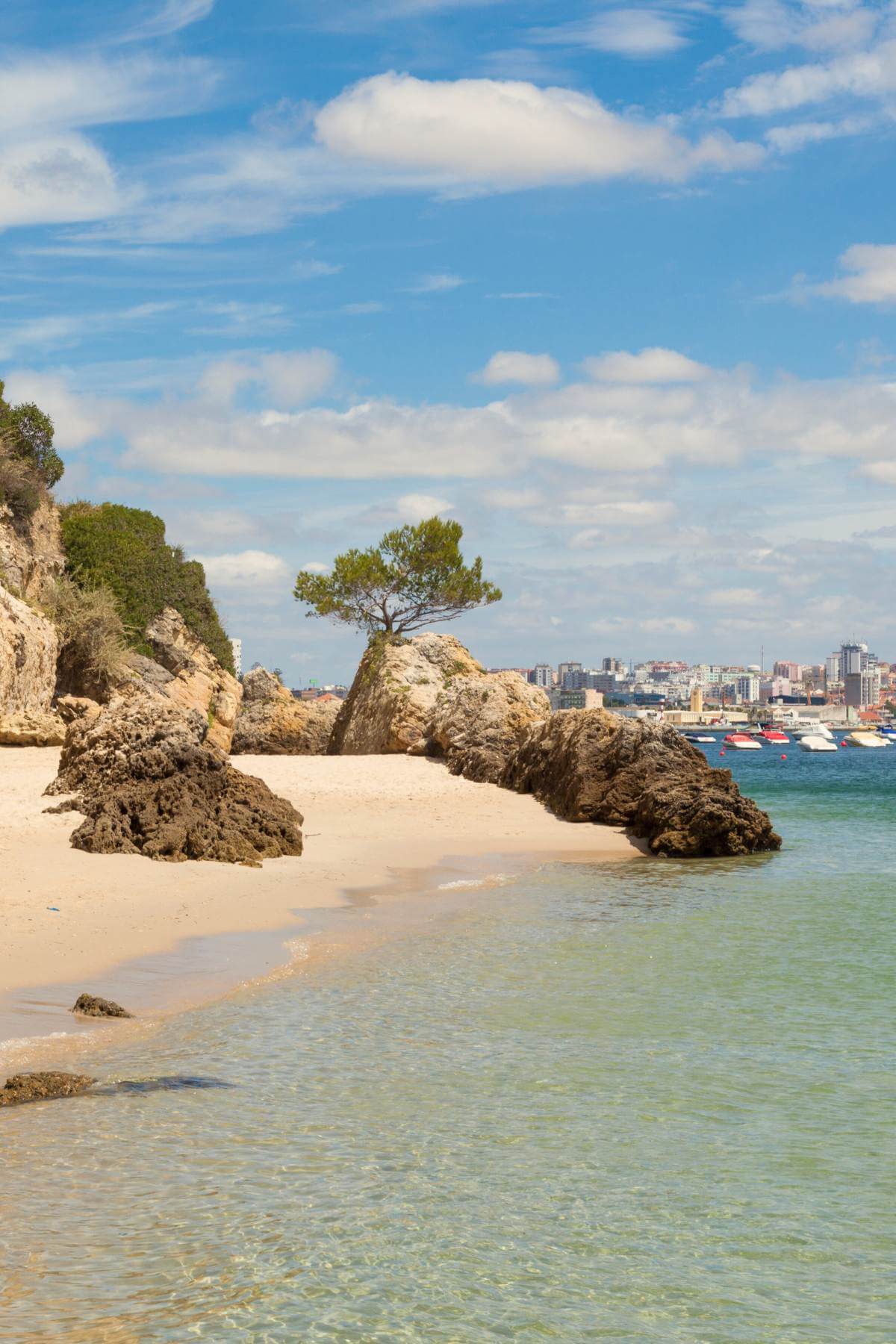
Like this Post? Share it on Pinterest!
